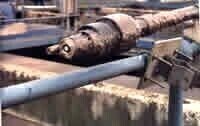Water/wastewater
Dirty Dissolved Oxygen Sensors Increase Energy Use for Waste Water Treatment
Sep 29 2008
Power costs related to the operation of activated sludge aeration equipment generally runs from 30% to 60% of the total electrical power used by a typical waste water facility. Dissolved oxygen control in the aeration process can save substantial amounts of power by applying only enough air for the biological process to function efficiently. An important additional benefit of accurate control is improved process efficiency and consistent clarifier operation.
The key to optimisation of the aeration process is accurate, but much more importantly, reliable D.O. monitoring. The signals from on-line D.O. equipment provide the basic control parameter required for blower control. With dependable control inputs, aeration equipment can be modulated to maintain D.O. values at optimum levels.
A study by a UK water company indicates that every ppm error in dissolved oxygen measurement results in a 15% increase in electricity costs.The key to reliable measurement is keeping the sensor clean. Manual cleaning is expensive and time consuming and cannot be undertaken frequently enough to give the reliability needed for control.
The ATi AutoClean dissolved oxygen monitor can be programmed to clean itself from once every hour to once every day. Typical calibration interval is a once every 6 months air cal. Mainteance is an annual membrane change that costs £1 and takes 15 minutes.
Digital Edition
AET 28.4 Oct/Nov 2024
November 2024
Gas Detection - Go from lagging to leading: why investment in gas detection makes sense Air Monitoring - Swirl and vortex meters will aid green hydrogen production - Beyond the Stack: Emi...
View all digital editions
Events
Jan 12 2025 Abu Dhabi, UAE
Jan 14 2025 Abu Dhabi, UAE
Jan 20 2025 San Diego, CA, USA
Carrefour des Gestions Locales de L'eau
Jan 22 2025 Rennes, France
Safety, Health & Wellbeing LIVE
Jan 22 2025 Manchester, UK



















